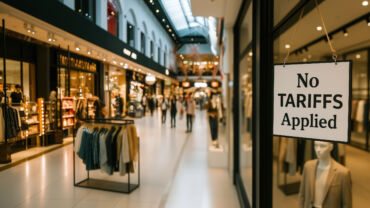As the coronavirus (COVID-19) continues to spread globally, our main objectives now are to help you and your businesses navigate this complicated and ever-changing environment. Click here to view our latest resources on COVID-19, created by our legal and tax experts to assist you as you prepare and respond to issues.
It wasn’t that long ago that all you needed to work in the world of global trade compliance was two enormous print editions of the Harmonized Tariff Schedule and your smarts. After a few years, what became imperative for every importer or exporter, particularly those with large volumes to manage, was to replace those paper books with automated solutions that drive accuracy and efficiency. But in the last two years, our world of global trade has turned upside down, and now it feels like the only thing we need in our global trade compliance toolkit is a crystal ball.
Importers and exporters are certainly no strangers to change. Just in the U.S. alone, over the last ten or so years, compliance teams have worked through numerous trade issues such as 10+2, ACE, Lacey Act, Export Control Reform, TFTEA, the numerous Section 301/232 duties, and USMCA. But now supply chains are facing a global COVID-19 (coronavirus) pandemic – something so impactful that companies need truly unprecedented tools and approaches to manage the disruption.
Impacts on the air cargo industry
To understand the impact, it’s important to recognize just how quickly the environment changed in the world of global shipping – clearly a direct result and reflection of the speed of the virus’s spread. Even though the first cases had only been reported at the end of 2019, by January 29, it was reported that the air cargo industry was already starting to feel capacity constraints and corresponding price pressure because of so many air passenger flights that had been cancelled due to coronavirus. Conditions in the air market grew quickly worse through February, with the cancellation of more flights as many businesses put travel policies limiting non-essential travel in place. By early March, the International Air Transport Association (IATA) had revised its forecast for the air passenger sector for 2020 to see a revenue loss of somewhere between $63B and $113B.
Impacts on ocean shipping
The impact on ocean shipping was slower to respond, likely in part because the start of the impact of COVID-19 occurred at the time of the Chinese Lunar New Year, which is always a slower time for global ocean shipping. But when the virus affected such a large number of Chinese workers that many factories could not re-open after Chinese New Year, shippers around the world started to feel the effects. Some early commentary was actually almost optimistic, suggesting, for example, that the reduction in rates due to the virus might be good in offsetting the pressures from rising fuel costs. As late as the end of February, the National Retail Federation (NRF) issued a positive outlook for the year, stating that they anticipated growth of 3.5 to 4.1% “despite uncertainty from the lingering trade war, coronavirus, and the presidential election.”
But even by that point in time, global importers, exporters, and carriers were seeing growing impact from the fallout of the factory closures in China, which were extending into South Korea as well. Numerous carriers cut sailings out of their schedules, and the trickle-down effects began to permeate the industry. For example, the back-haul sailings of the blanked sailings were also cut in many cases. What that means is that an exporter expecting to ship goods from the U.S. to China, for example, would not have the same availability or would find higher rates because of a lack of capacity. According to Alan Murphy, CEO of Sea-Intelligence, shippers need to “brace for the backhaul rate spike” into April. At the end of the day, the American Association of Port Authorities is now forecasting that cargo volumes in Q1 of 2020 may be down by 20% compared to last year. How the rest of the year plays out for ocean is harder to predict without that crystal ball.
Impacts on trade compliance departments
Global trade compliance teams are accustomed to working closely with their internal counterparts on the transportation and logistics teams to stay in sync when conditions are changing. It’s considered a best practice to have a formal process for ensuring that a logistics change, such as a rerouted shipment, is communicated to trade compliance. By the same token, trade compliance needs to let logistics know if a shipment is delayed for some reason by import or export formalities. That’s just business as usual.
But our current world with COVID-19 is unprecedented. Procedures that trade professionals follow to remain compliant and keep up with the new regulations have changed. Regulations are changing for completely different reasons now, and the sources that trade compliance teams follow for regulatory information can be different. For example, when President Trump extended the ban on foreign nationals from most European nations to the United States on March 12, there was a brief period of confusion over whether the ban included freight as well, which would clearly be a significant difference to the trade team.
While that ban is limited to travelers, in some cases, governments have enacted new global trade regulations as a direct result of the coronavirus, and trade compliance teams need to remain diligent to comply. The most significant changes have come from the way countries have put in place export controls or restrictions in an effort to protect their own populations. The controlled goods are generally certain drugs or items, such as face masks, that a country may run out of if too much inventory was exported. Particularly in the first half of March, per a report from WorldECR, countries like France, Italy, Germany, Russia, India, Turkey, Thailand, and others have moved to limit or completely ban the export of these items. As a trade compliance professional, of course, one needs to be aware of a new and unexpected regulation of this sort.
However, the news is not all bad for teams responsible for managing their company’s trade compliance functions. In the U.S., a new Section 301 exclusions list was recently published, specifically to provide for many medical items, including the currently in-demand “Single-use medical masks of textile materials (described in reporting number 6307.90.9889).” In addition, while some countries are restricting the export of medical goods in an attempt to stockpile such items, the U.S. Food and Drug Administration has been proactively working with China and the companies there who manufacture drugs and medical supplies since as early as late January to ensure that they are aware if there will be any impact to the available supply of needed goods shipped to the U.S. As of the FDA’s February 27 statement on the topic, the agency was not aware of any such shortages.
Dealing with disruptors
What is clear is that the types of regulatory changes and their impact on the supply chain due to the COVID-19 pandemic are unpredictable. Trade professionals are also finding that typical sources of expertise and best practices are harder to navigate in a “social distancing” world. Many trade associations have canceled their conferences in recent weeks, including the CBP Trade Symposium, Trans Pacific Maritime Conference, International Trade Compliance Professionals Association Conference, and IATA’s World Cargo Symposium. In times like these, it’s critical for trade professionals to network, learn, and share best practices – because if one thing is clear, it’s that virtually all global shippers are or will be impacted by coronavirus.
The impact from coronavirus first became apparent as numerous companies released Q4 earnings reports or projections for Q1 recently. Cummins, for example, called out coronavirus as a reason for weaker than expected earnings and profit in Q4 in their February public webcast. Similarly, in mid-February, Apple revised a forecast that they had made only weeks earlier to a less rosy one, specifically citing coronavirus as the cause. Looking at the economy more broadly, Goldman Sachs has stated that they believe at this point that the U.S. will see a 5% drop in GDP in Q2 as we head into a recession specifically driven by the pandemic.
From a trade compliance perspective, the results of a recent survey may be even more striking. The Institute for Supply Management conducted a survey of 628 manufacturers and service providers in the field of global trade. When asked about their operations, 44% of the respondents answered that they do not have a plan in place to address supply disruptions from China.
This is where you take out your crystal ball, right? That might be what ElMarie Hugo was thinking when she spoke recently on the topic of coronavirus and supply chains. Hugo is the senior director of industry strategy at Blue Yonder (formerly JDA). Hugo noted, “Supply chains should have flexibility and have the ability to deal with the fluctuation in demand and supply. [. . .] But if companies cannot – in a matter of three months – create alternative supply chains by sourcing from other locations, they are failing to have flexibility.”
Where do we go from here?
Now for the good news – it’s okay if you or your boss didn’t have the foresight to put the department crystal balls in the 2020 budget. You don’t need one. In these times of travel bans, networking has certainly been harder. While complying with recommendations for “social distancing,” importers, exporters, and service providers can still find ways to discuss these erratic times we are living through and share best practices.
Whether on larger association calls or personal calls, I’ve participated in numerous conversations in recent weeks with trade professionals, and of course this topic always comes up. Many shippers I’ve spoken to are working on identifying where they have gaps in reporting capabilities – so they can be better prepared and understand the big picture of what’s going on now, what the possibilities are for making those alternative supply chains in a matter of three months, and what the cost would be to do so.
It should go without saying that there’s more to re-sourcing than just transactional cost. Finding suppliers, establishing terms, and ensuring that they meet the regulatory and business requirements you have for a supply chain partner are all critical too, so it’s important to start the exercise now. Once the upfront work is in place and you know what your Plan B and Plan C and maybe even Plan D look like, you can reevaluate your options much more clearly. It can be as straightforward as taking your data and running it through the model with current regulatory data like duty rates to see the impact of re-sourcing at any time in the future.
And at that point, I would put a lot more trust in the data than the crystal ball – so I might just let it sit on the shelf and collect dust.







